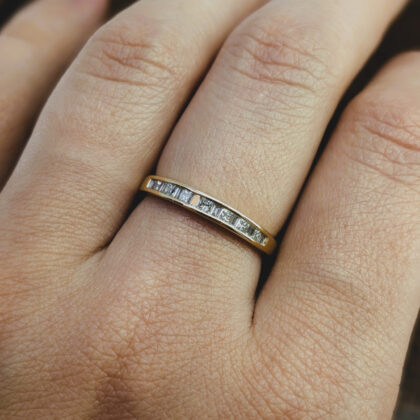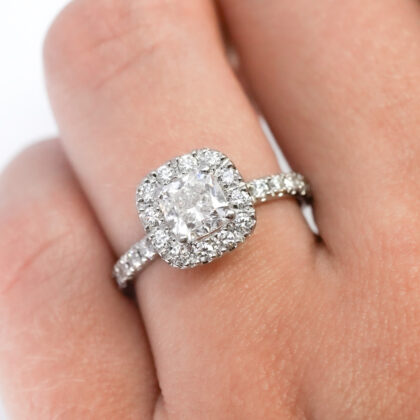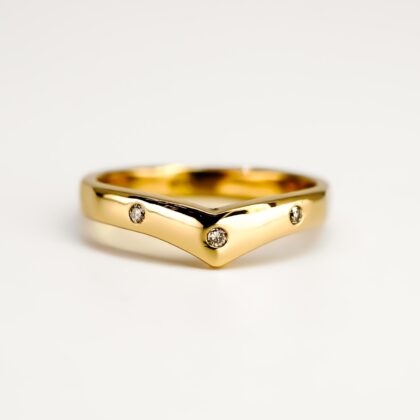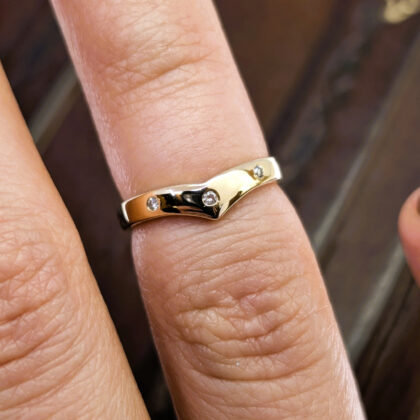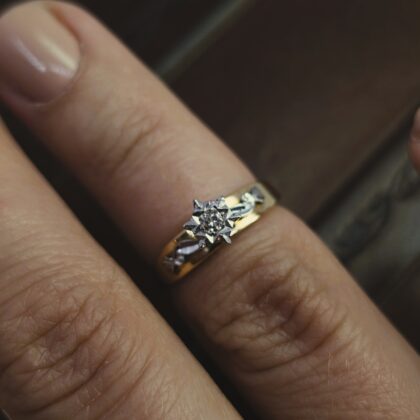
Have you heard of the four C’s of diamonds? You might be wondering what does it all mean? Well read on to learn everything about diamonds!
Table of Contents
At Monty’s our aim is to educate you so that you feel confident with your purchase – not just when you receive your diamond ring, but forever. You don’t need to take a complicated course to understand the 4 C’s of diamonds, as this blog post will teach you what to look for when investing in your next diamond jewellery.
This comprehensive diamond guide explains all the important aspects of a diamond’s characteristics. These are referred to as the 4 C’s of diamonds; Cut, Colour, Clarity and Carat Weight. We will cover each of these very important factors so you can be confident you are buying a quality stone. When it comes to buying a diamond in Australia there are so many options available it might feel a bit overwhelming, but if you focus on the four C’s of diamonds you can find a stone you love.

Part One: Diamond Colours
Diamond colours are graded in letters from D to Z, with D being colourless (as white as possible) to Z which has a light yellow colour tint. This colour range is used universally worldwide and was developed by the Gemmological Association of America as a way to standardize diamond grading. This means that no matter where you choose to purchase your diamond, an F colour should always be the same.
The only exception’s to this are what is often referred to as fancy colours. Fancy colour diamonds are stones which are pink, blue or brown. Brown diamonds are often given names like Champagne or Cognac as this reflects the colour you see in the stone. They, along with the ultra rare pinks, have their own colour grading scale. The Argyle mine in Western Australia is the world’s largest producer of champagne and cognac coloured diamonds.
Colour is one of those most important choices when picking a stone. When it comes to traditional diamonds the more colourless a stone is the more expensive it will be. Diamonds with a D colouring a very rare and command high prices, but the other factors such as clarity, carat weight and cut also play a part.
This chart shows the different diamond colours from D through to Z.


Part Two: Diamond Clarity
The clarity of a diamond is determined by the amount of inclusions, or blemishes found in a stone. An inclusion is a small carbon spot that can be white or black in colour. The higher the clarity of a diamond the cleaner it will appear to the naked eye. Many inclusions can only be seen under magnification but can affect the overall appearance of a stone. Clarity also affects the price, the highest clarity grade ‘flawless’ is extremely rare and many jewellers will never come across one in their careers. A high quality yet affordable stone will usually full in the VVS to SI range. Below are the standard clarity definitions which you will find on jewellery valuations.
Flawless (FL) – No inclusions or blemishes are visible to a skilled grader using 10× magnification.
Internally Flawless (IF) – No inclusions and only blemishes are visible to a skilled grader using 10× magnification.
Very, Very Slightly Included (VVS1 and VVS2) – Inclusions are difficult for a skilled grader to see under 10× magnification.
Very Slightly Included (VS1 and VS2) – Inclusions are fairly difficult for a skilled grader to see under 10× magnification and are characterised as very minor.
Slightly Included (SI1 and SI2) – Inclusions are noticeable to a skilled grader using 10× magnification.
Included (I1, I2, and I3) – Inclusions are obvious under 10× magnification and may affect transparency and brilliance. These inclusions are visible to the unaided eye.
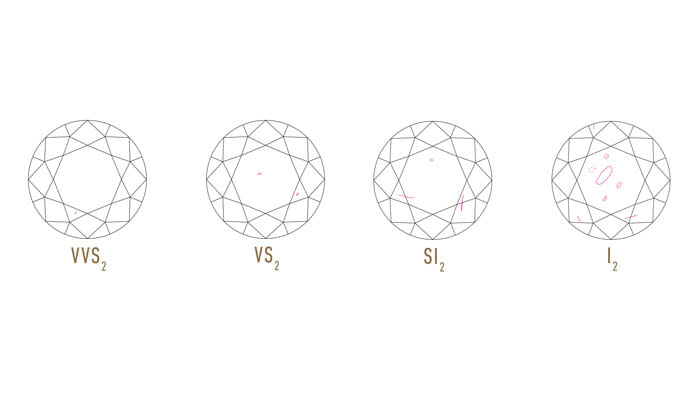

Part Three: Diamond Carat Weight
Diamonds, like all other gemstones are weighed in metric carats. Just as a dollar is divided into 100 cents, a carat is divided into 100 points. Different jewellers may use slightly different phrasing when describing the weight of a diamond. Some will use points while others will refer to the carat weight. A 50 point diamond is the same as a 0.50ct, or half carat diamond. When a diamond is measured all sides are taken into account, and that includes the depth of a diamond. This means that two 0.50ct round brilliant diamonds may be a slightly different width, as one could be deeper than the other.
Carat weight plays a big role in determining the overall look and feel of a ring. The larger the diamond the higher the price will be. If you are working to a budget but your dream ring includes a 1 carat diamond then you can opt for a slightly off white or a stone with more inclusions to bring the price down.
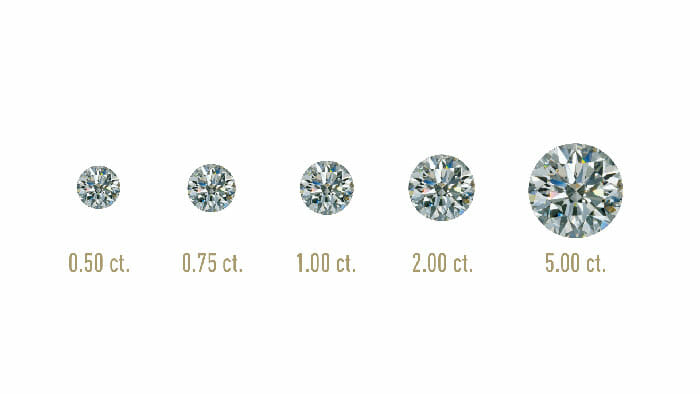

Part Four: Cut
The cut grade of a diamond is another important part of the four c’s of diamonds and is the most important factor in the overall beauty of a stone. The cut is what gives the diamond its sparkle, fire and brilliance, and consists of three main factors:
Proportions – The proportions of the diamond must be as close to ‘ideal’ as possible. If the diamond is cut too shallow, the light will leak out of the bottom of the stone. If the stone is cut too deep, the light will leak out of the side of the stone.
Symmetry – Facets are compared in opposing pairs and must match their opposing facet perfectly.
Polish – The polish of the stone is the final touch in the cutting process where all the imperfections, abrasions and scratches are carefully polished off to give the diamond a mirror shine.
Based on the above diamond cuts are then graded either Excellent, Very Good, Good, Fair or Poor. All of the above factors are crucial in determining the cut grade of the diamond, and must be of the highest quality and craftsmanship to bring out the true beauty and fire in a diamond.
In 1919, Marcel Tolkowsky, a Belgium diamond cutter, published his determinations for the most attractive and balanced cut for round brilliant diamonds. His proportions where based mostly on mathematical calculation involving the critical angle of diamond (the angle at which light bends when it enters a diamond). These dimensions and proportions resulted in a spectacularly beautiful diamond and was given the name ‘The American Ideal Cut’.
In recent years where Cut (proportions) has become a much more important aspect than it had been in the past, cutters have endeavoured to produce the brightest, most scintillating diamond possible, and at the same time produce this stone by saving as much weight from the rough diamond as they can. They have done this with great results producing a beautiful diamond at a competitive price.
‘Cut grades’ only apply to round brilliant cut diamonds. The ‘ideal cut grade’ has only been formalised by researchers for round brilliant cuts. For all other diamond shapes the grading report will state the polish quality and symmetry on the stone.

So there you have it, the four C’s of diamonds! With so many options out there shopping for a quality diamond is a big task, but by choosing a pre-loved stone you can stretch your budget further and get a higher quality stone. The saying “Diamonds last forever” really is true. They are an incredibly robust material perfect for not just one, but many lifetimes of wear.
Shop Diamond Rings
- 10ct Yellow Gold Diamond Ring Size O #68729Original price was: $415.00.$352.75Current price is: $352.75.
- 10ct Yellow Gold Diamond Band Ring – Size O #68668Original price was: $495.00.$420.75Current price is: $420.75.
- 18ct Yellow Gold Channel Set Diamond Ring #68666Original price was: $775.00.$658.75Current price is: $658.75.
- 18ct Gold 1.48ct TW GIA Diamond Halo Engagement Ring Size M Val $14500 #65206Original price was: $6,950.00.$5,560.00Current price is: $5,560.00.
- 1.01ct Handmade Solitaire Diamond Ring – 18ct White Gold – GIA & Val $10200 #66162Original price was: $4,650.00.$4,000.00Current price is: $4,000.00.
- 18ct Yellow Gold Diamond Ring – Size I #68276Original price was: $795.00.$675.75Current price is: $675.75.
- 9ct Yellow Gold Diamond Cross Ring – Size O #68832Original price was: $265.00.$225.25Current price is: $225.25.
- 18ct Yellow Gold Diamond Ring 3.6g – Size L½ #68680Original price was: $995.00.$845.75Current price is: $845.75.
- Vintage 18ct Yellow Gold Diamond Ring Size J – Star Setting #68270Original price was: $925.00.$786.25Current price is: $786.25.






